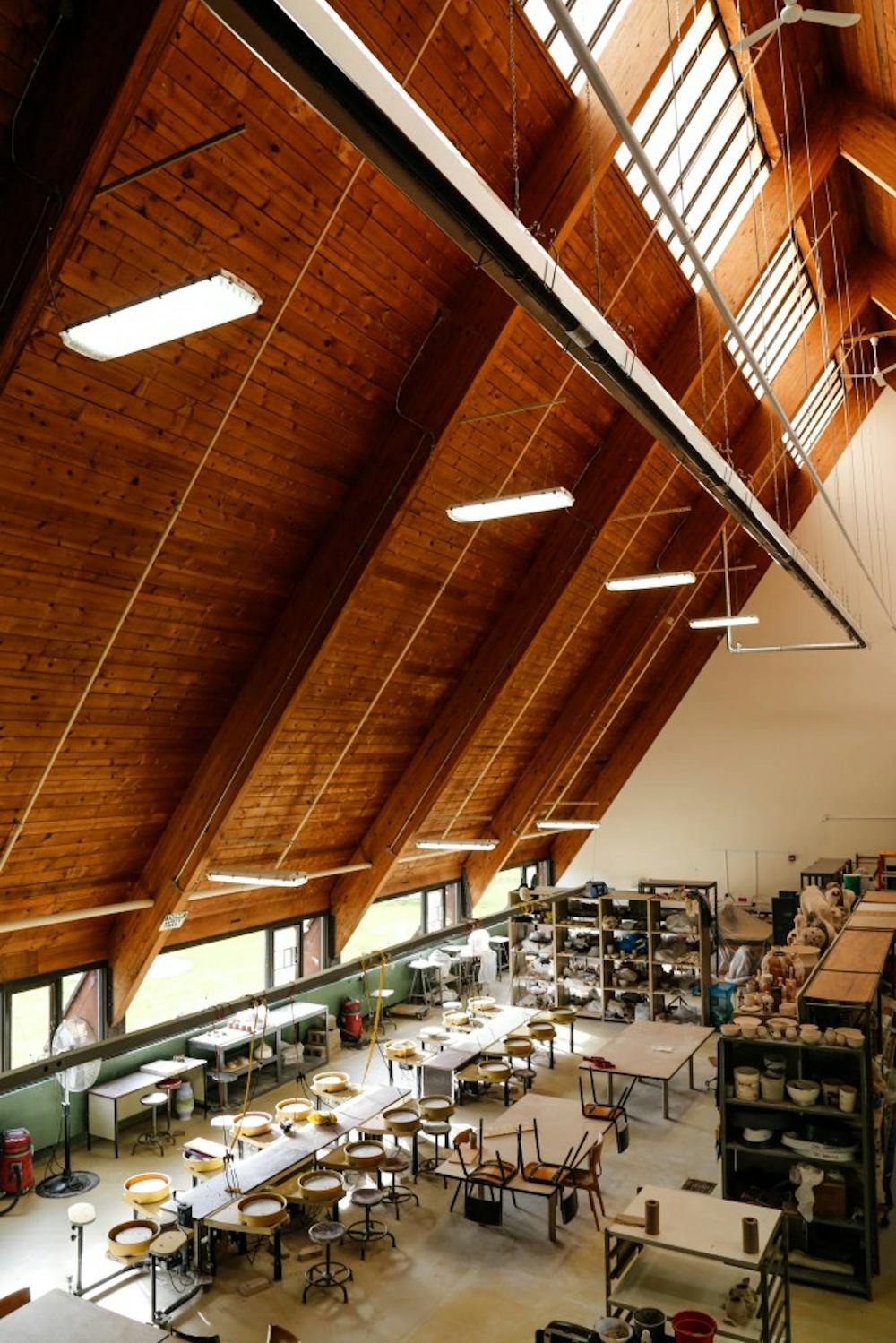North Art Studio cleanup leaves contaminated, contained air ducts

A building up of metals including lead, copper and mercury were found in the North Art Studio this summer, and the cleanup and removal of contaminated material was completed on Nov. 20.
"It started with somebody asking the question about dust and then we did sampling to address the question," said Director of Laboratory of Field Safety Jennifer Walton.
The air handler that was contaminated was removed from the mechanical room, and surface wipe samples were collected to confirm the area is clean. The mechanical room is still blocked off upstairs and will remain that way until lab results indicate it is clean for unrestricted release, Walton said.
There was contaminated ductwork that will stay in the building, but it will be sealed, labeled and contained, Walton said. Most of the ductwork found to be contaminated was removed in the cleaning process, but some is being left in the building because it directly interferes with the structure of the building, she said.
"We have removed a lot of ductwork," Walton said. "A few pieces that remain go through part of the structure. Cleaning involved a wipe-down and review of all items including anything stored on shelves that have dust. Some furniture items have already been replaced."
The cost of clean up and environmental testing for the North Art Studio as of Nov. 16 is $225,200, said Mary Hill, Associate Vice President and Controller in Financial Services and Reporting.
Most of the cost so far has been for decontamination and subsequent testing to confirm everything has been cleaned properly. However, the cleanup is not complete, so there could be bills that have not been processed yet, Hill said.
Walton said no health concerns have been confirmed related to the studio contamination, but metals found during the summer were above Occupational Safety and Health Administration recommended levels.
"I wasn't privvy to some of those meetings," said Project Manager of the cleaning operation, Norman Green, when asked if the deadline for the cleaning process was scheduled to be completed before classes started. "I think we did really well on our timeline."
Green said there were a lot of furniture items that had to be removed and disposed of in the cleaning process. It involved setting up a negative pressure environment to contain any airborne particles and using a hepa vacuum — which has a concentrated filtration method — and wet-wiping surfaces many times to ensure the environment was properly cleaned.
There is no active use of any lead-based materials in the studio, Walton said, and the cause might be a historic use of problematic materials, nothing active professors would have contributed to.
In the course of the cleanup of the North Art Studio, every space was cleaned, some items were cleaned and returned to service, and some items were disposed. CMU had the option of cleaning second floor faculty and staff offices, rooms 201 through 205, and returning them to offices or repurposing them for other use. CMU opted to repurpose the second floor space.
As cleanup work progressed through the building, clearance surface wipe sampling was conducted to verify clean surfaces. The systematic cleaning and sampling verification process was successful, Walton said.
During the cleaning process, 144 wipe samples were collected, identifying 10 metals, all of them exceeding the recommended housekeeping limit except for arsenic. Although they were above the recommended housekeeping limit, there was no evidence of over-exposure.
According to CMU's website, "In order for a metal to harm you, you need to have intimate contact with it (inhalation, absorption, injection or ingestion), and in a concentration high enough to cause toxicity to the body. Given the air sampling and surface sampling results compiled to date, it is unlikely any harm has occurred."
Students are encouraged to go to their doctor if they have any concerns.
Although metals can be commonplace in art studios, discussions are underway to determine how to prevent future contamination, but the main focus is inventory control, meaning not using lead-based materials for art classes. This process will include reviewing cleaning processes and identifying and determining what to do with art materials that might be the source of the metals, said the Vice President of Finances and Administrative services, Barrie Wilkes.



